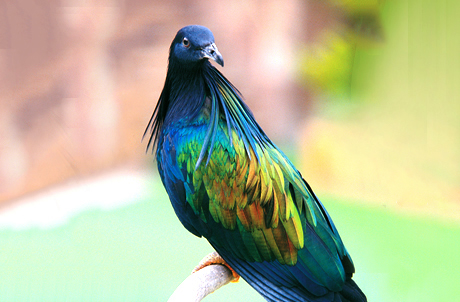Join our hands to conserve nature!
Caloenas nicobarica
Nicobar Dove, Hackled Pigeon
Up to 38 cm
Up to 600 g
Woodlands or forests on small islands in the Indo-Pacific region, including countries such as the Philippines, Indonesia and Papua New Guinea



















